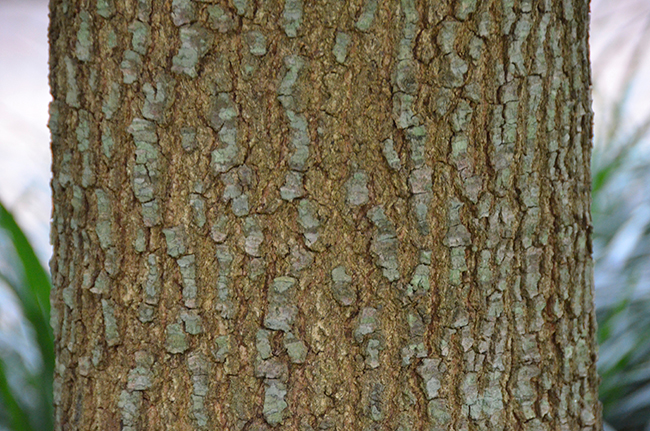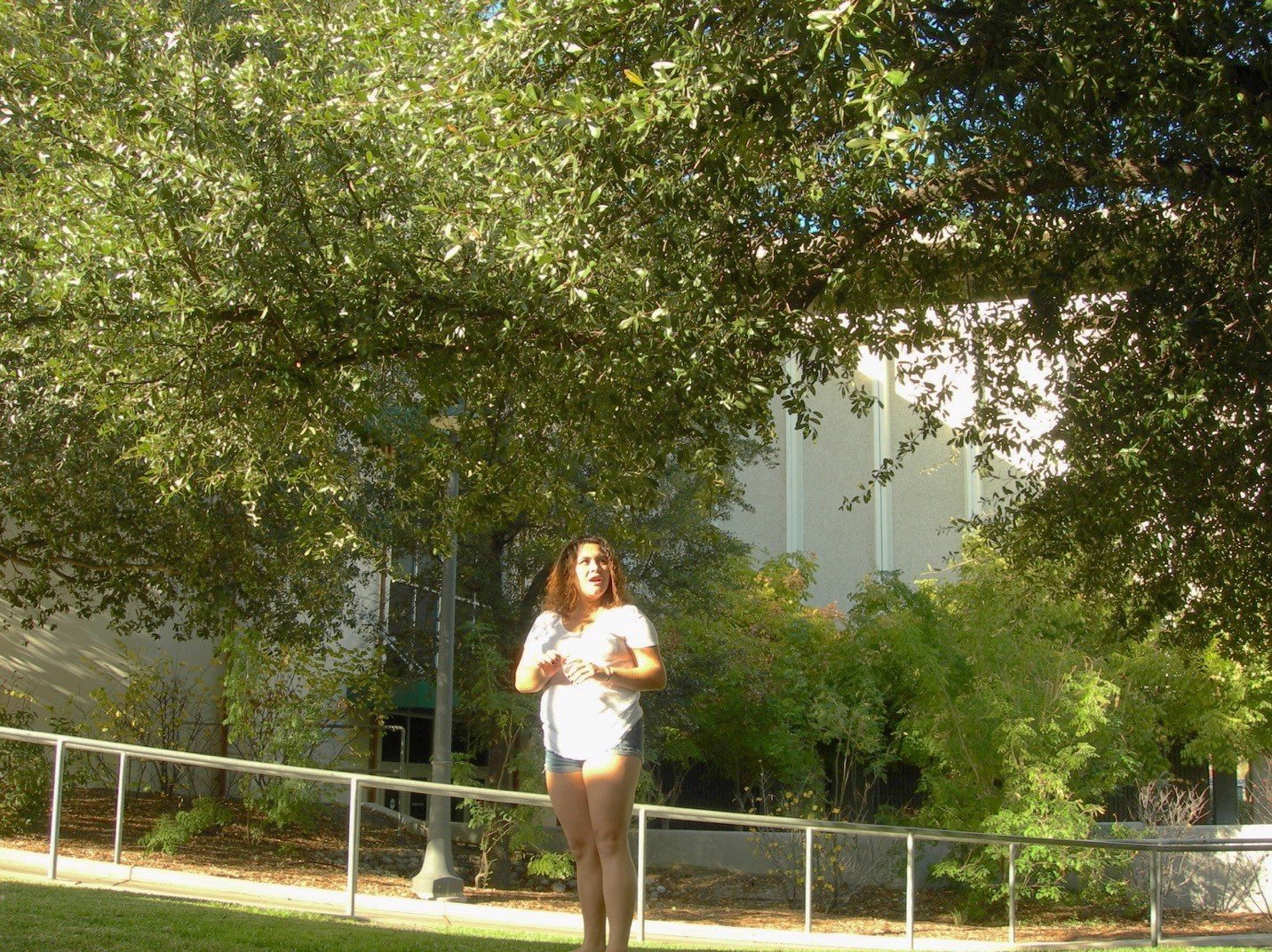University of Redlands Emergency Alert System
Alert Received: . For more information, visit: https://www.redlands.edu/alert/
University of Redlands
- Home
- Trees
- Species Accounts
- Southern Live Oak
Common Name: Southern Live Oak
Scientific Name: Quercus virginiana
Family: Fagaceae
Identification
Habit: These trees vary from shrub-size to large trees with limbs that extend down towards the ground and then curve up again. They can be as tall as 70 feet (21 m) and their limbs spreading up to 90 feet (27 m).  https://en.wikipedia.org/wiki/Quercus_virginiana#/media/File:Oak_at_the_Protestant_Children%27s_Home_Sept_2012.jpg
https://en.wikipedia.org/wiki/Quercus_virginiana#/media/File:Oak_at_the_Protestant_Children%27s_Home_Sept_2012.jpg
Leaves: The leaves on these trees are usually stiff and leathery with shiny dark tops and bottom pale gray bottoms and they usually don’t drop until Spring when new leaves are about to come in. These leaves are skinny and long, up to 6 inches (15 cm) long and 2 inches (5 cm) wide. They usually have a smooth, bony margin.  https://en.wikipedia.org/wiki/Quercus_virginiana
https://en.wikipedia.org/wiki/Quercus_virginiana
Twigs & Bark: The bark is dark, thick, and furrowed lengthways. The twigs are gray with many small terminal buds.
 https://selectree.calpoly.edu/tree-detail/quercus-virginiana
https://selectree.calpoly.edu/tree-detail/quercus-virginiana
Flowers & Fruits: Flowers are green and catkins and can be up to 4 inches long. Acorns on these trees can grow to be 1 inch (2.5 cm) and are usually dark in color and very shiny and oblong.
 https://selectree.calpoly.edu/tree-detail/quercus-virginiana
https://selectree.calpoly.edu/tree-detail/quercus-virginiana
Where it’s from
Native Range: These trees can be found in the lower coastal plain of the Gulf of Mexico. It can be found in either single or mixed species forests. The native habitat of these trees started on the coast of Virginia to the coast of South Carolina and from there it started to expand inland. This species can grow across a wide-range of places including places that are dry to moist because this species can survive well in both. It can grow in marshes, swamps, and higher land sites like those on campus.  https://www.naturehills.com/southern-live-oak
https://www.naturehills.com/southern-live-oak
(Both native and planted range)
Ecological Notes: Young trees can be top-killed by fire, but can re-sprout. When a fire burns near this tree or even burns the tree, the fire will not burn the trees roots. Wildlife use these trees for food and protection, and nest sites for birds and squirrels. These trees produce acorns, feeding several mammal and bird species, and protect them while eating in the tree. For those trees in the South, they face a possible fungus infection in their roots causing oak wilt disease.
What we use it for
This type of wood is very hard and heavy so it is a bit hard to work with. When wooden ships were still a thing, manufacturers used this type of wood because of how strong it is. Many ships that were well known were made out of this species of wood, including the USS Constitution. The bark on this tree was used for dyes and the leaves were used for medicinal purposes but also for rugs. Some older specimens today are historical landmarks in the South.
References
Biographer
Aritnay Aranzubia ‘21, FYS 20: Plants in Our World, Fall 2017